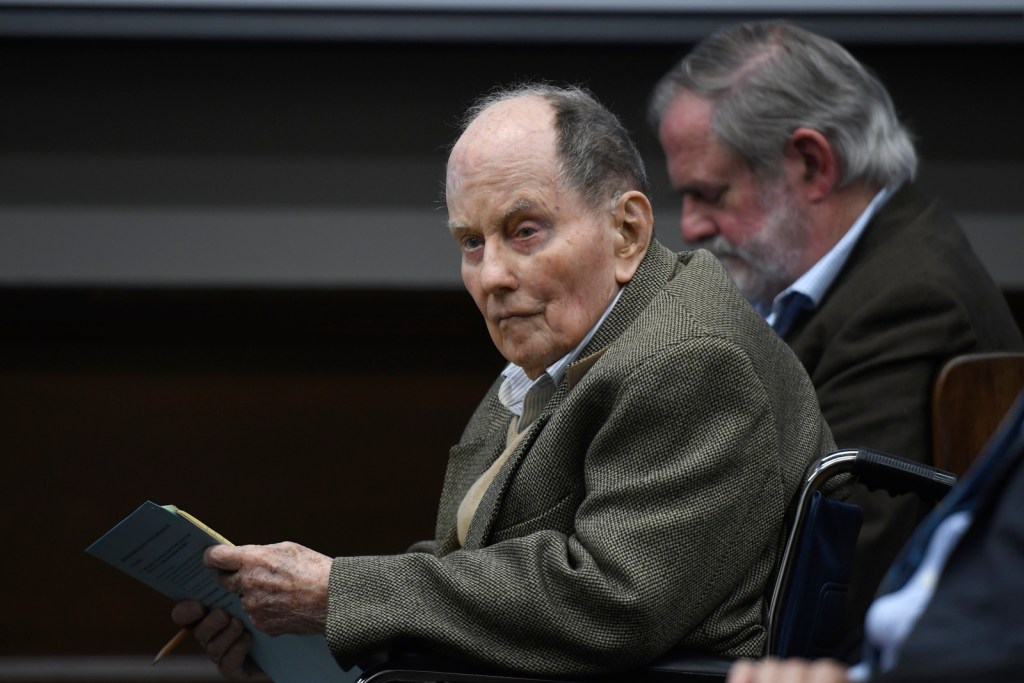Kellam de Forest, one of the most dogged, determined, and recognizable of Santa Barbara’s dwindling cadre of historic preservationists, died this week of COVID-19. He was 94.
De Forest struck an unmistakable figure in town the past 25 years, impish, slight of build, rumpled of hair, slow of speech, and even slower of gait. His mind, however, was quick, sharp, and always precise, as anyone listening to his frequent testimony before the city’s Historic Landmarks Commission could attest. De Forest bird-dogged such meetings during the past 15 years, highlighting the inevitable collision course between proposed new developments and Santa Barbara’s historically defining architecture. De Forest was not one to allow the frailties of age to interfere with his preservationist passion; in recent years, he showed up to meetings courtesy of his wheelchair, and before that with the assistance of a walker.
Get the top stories in your inbox by signing up for our daily newsletter, Indy Today.
De Forest was the son of noted Santa Barbara landscape architects Lockwood and Elizabeth de Forest and grandson of the equally famed landscape painter, Lockwood de Forest. His father, for example, designed the landscaping of the Santa Barbara Museum of Natural History, much of the Botanic Garden, and Montecito’s Val Verde estate.
Kellam de Forest was not one to rest on his parents’ laurels — though he was fiercely protective where their work was involved — and enjoyed a long and successful career of his own making, creating the largest historical research consulting firm in Hollywood. Starting out in 1952 — just as television was gaining a toehold as the most defining purveyor of popular culture — he would work on such high-profile TV shows as Star Trek, Peter Gunn, Gunsmoke, The Twilight Zone, and The Untouchables.
De Forest — who graduated from Yale in 1949 with a degree in history — also worked on blockbuster films like The Godfather and Chinatown. Much of his work involved screening scripts to ensure historical authenticity. But much of it was designed to protect production companies from possible lawsuits. For example, the villain in the original script for Chinatown was named Joshua Cross. But when de Forest discovered someone with the same name was still living in Los Angeles, the decision was made to change the film character’s name to Noah Cross, who was played to diabolical perfection by John Huston. Given the movie’s focus on the corruption surrounding water politics, the name Noah — the biblical personage who weathered God’s great flood with an arc bulging with all the creatures of the earth — made much more sense.
De Forest was born in Santa Barbara and grew up in Mission Canyon, a child of Santa Barbara’s cultural and political royalty. His father designed landscapes for the likes of Leopold Stokowski, the famed orchestra conductor then living in Toro Canyon. De Forest attended Crane and Thacher schools, served time in the military during World War II, and then attended Yale. His parents were part of the drably named Plans and Planting Committee, which, under the tutelage of civic matriarch Pearl Chase and her co-conspirator Bernhard Hoffmann, reinvented the architectural style that would define what Santa Barbara came to look like.
Once Kellam de Forest moved back to Santa Barbara with his wife, Margaret, in 1992 he threw himself into the preservationist cause with focused abandon. He emerged as a moving force within such organizations as the Pearl Chase Society and Citizens Planning Association, which Chase created. He advocated the historic preservation of the Rio Grande gas station — striking and distinct for its Moorish tile work — located on the western fringes of Goleta. Likewise, he was a passionate advocate for opening Val Verde, the Montecito estate for which his father designed the landscaping. Val Verde was also famous as a refuge for members of the gay cultural elite, which was whispered at as a motivation for the strenuous neighborhood opposition to making the estate gardens public. Concern about tour buses and traffic on Montecito’s narrow winding roads was what was debated in public. Ultimately, the opponents prevailed, and Val Verde was sold to a homophobic Russian oligarch.
As an activist, de Forest reportedly brought the same precision and rigor as he had as a Hollywood consultant. “Kellam was very direct. He didn’t get emotional,” recalled Mary Louise Day, a fellow preservationist and Santa Barbara historian. He was very businesslike in meetings. He was someone who wanted to accomplish things. He was not there for the chatter or the gossip.”
De Forest won numerous accolades and many awards for his work even as Santa Barbara’s political tides shifted to favor higher density development. When he received the St. Barbara award in 2013 from then-mayor Helene Schneider, de Forest commented, “It is only by bringing attention to threats to historic structures and sites that makes Santa Barbara a unique city.”
CORRECTION: This story was updated to state Kellam de Forest was 94 when he died, he was active in town for 25 years, he and his wife moved to L.A. in 1952, the Ojai school is spelled “Thacher,” his father designed the Natural History Museum‘s landscaping, and de Forest received the Saint Barbara award in 2013.
Every day, the staff of the Santa Barbara Independent works hard to sort out truth from rumor and keep you informed of what’s happening across the entire Santa Barbara community. Now there’s a way to directly enable these efforts. Support the Independent by making a direct contribution or with a subscription to Indy+.

